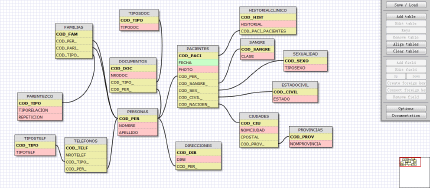本文属摘抄文章,以作备份
原文地址为:http://www.tbqu.com/post/251.html
mysql里的变量分系统变量和用户变量.
系统变量
其中系统变量,又分全局(global)和会话(session)两种.
全局系统变量,主要影响整个mysql实例的全局设置.
大部分变量都是作为mysql的服务器调节参数存在.新增或修改这类变量, 会影响mysql的运行方式.
比如: auto_increment_increment 代表序列的自增值, 默认为1
另外, mysql中,只有一部分变量是支持运行时动态修改的.
变量修改的作用范围,是那些重新创建连接到mysql服务器的客户端连接.
如果你的连接是由应用通过连接池来维护的,并且,是长连接的,那么,此时在服务器运行过程中,动态地修改全局变量对你是没有什么影响的.
通过全局变量, 我们可以想到一些应用场景:
1, 在存储过程, 函数, sql里,使用一些业务相关的全局变量.
经常编写业务相关的存储过程,函数的朋友, 可能会需要针对不同业务,设置能共享访问的全局变量.
比如, 公司的总人数,很多存储过程都需要调用这个值,但是因为这个值,不是经常会改变的,不需要每次都count.
所以大多数人会考虑把它cache一把,那么mysql提供的全局变量,就是一个好的存储场所.
2, 数据库配置中心
首先,这不一定是一种好的解决方式, 特别是大型地分布式系统.但是想到了,就跟大家分享一下.
主要就是利用了三层,四层架构的系统, 必不可少的数据库层来实现的.
大家知道, 应用的配置, 大多数是用配置文件或配置服务器来实现, 前者需要跟着项目打包, 部署.
后者, 只要在应用初始化或运行时,去配置中心取配置就行了.(淘宝这边两者都在用)
而数据库的配置中心, 其实类似配置服务器, 只不过灵活运用了mysql的变量机制.
它能继承配置服务器的多数优点, 但最大的特色就是在 sql, function , procedure 里都可以很方便地引用到.(相比用表的方式, 要方便一些)
并且本身就具有缓存, 移植得话, mysql得导出也是很快.
所以小系统, 想快速得搭建一个配置中心,利用mysql感觉还是不错的.
调用语法:
select * from user_info where id = @@global.admin_id — 例子,通过全局里配置的管理员id来取用户信息
以下是全局变量的一些常用命令,比较简单:
set global auto_increment_increment=1; — 设置序列的增长值
show global variables; — 显示所有的global变量
show global variables like ‘%test%’ — 查询包含test字符串的global变量
会话系统变量, 主要用于在当前客户端连接的生命周期内.它的变量值是全局变量的一份拷贝.
如果连接断开, 对当前会话变量所做修改都会被重置.
比如, 服务器会话变量 autocommit 默认为 true , 而你在非常连的客户端连接里设置了 false , 那么在执行完sql后, 连接就会断开. 此后,如果创建新的连接来执行sql, autocommit又会默认 true.
会话变量的使用场景与全局类似,只是生命周期不同, 因此可以用来
统计同一连接内请求sql次数, sql类型等信息.
session变量的一些常用操作:
set session auto_increment_increment=1; — 设置序列的增长值
show variables; or show session variables; — 如果不指明, 默认使用session变量
show variables like ‘%test%’ or show session variables lile ‘%test%’ — 查询包含test字符串的session变量
用户变量
基于会话变量实现的, 可以暂存值, 并传递给同一连接里的下一条sql使用的变量.
当客户端连接退出时,变量会被释放.
应用场景:
同一连接,未关闭情况下,帮你暂存一些计算结果.
比如
select @admin_id:=max(id) from user_info;
select * from user_info where id = @admin_id
以上两条sql在同一connection中完成.
另外,注意,用户变量前只有1个@, 2个@是用于存取系统变量的
业务相关的变量定义太多,无法区分系统全局变量?
这类问题,可以通过mysql提供的结构化系统变量来解决.
他们有独特的表示形式:
instance_name.test_var
比一般的变量多了一个instance_name.这样,你就可以很方便地对他们进行分类,比如 app.test_var,就可以区别于系统的var了.
PS: 其实,普通的系统变量,它也属于结构化变量,只不过他们默认隶属于 default 这个 instance, 不需要显示出来罢了.
影响mysql性能的系统变量
以下内容参考 http://www.mysqlperformanceblog.com/2006/06/08/mysql-server-variables-sql-layer-or-storage-engine-specific/
bulk_insert_buffer_size
批量插入缓存大小, 这个参数是针对MyISAM存储引擎来说的.适用于在一次性插入100-1000+条记录时, 提高效率.默认值是8M.可以针对数据量的大小,翻倍增加.
concurrent_insert
并发插入, 当表没有空洞(删除过记录), 在某进程获取读锁的情况下,其他进程可以在表尾部进行插入.
值可以设0不允许并发插入,1当表没有空洞时,执行并发插入,2.不管是否有空洞都执行并发插入.
默认是1.针对表的删除频率来设置.
delay_key_write
针对MyISAM存储引擎,延迟更新索引.意思是说,update记录时,先将数据up到磁盘,但不up索引,将索引存在内存里,当表关闭时,将内存索引,写到磁盘. 值为 0不开启, 1开启. 默认开启.
delayed_insert_limit, delayed_insert_timeout, delayed_queue_size
延迟插入, 将数据先交给内存队列, 然后慢慢地插入.但是这些配置,不是所有的存储引擎都支持, 目前来看, 常用的InnoDB不支持, MyISAM支持. 根据实际情况调大, 一般默认够用了.
expire_logs_days
自动删除超过指定天数的日志. 建议为0,表示“不自动删除”.
flush, flush_time
是否启用, 同步表数据到磁盘.以及自动同步的间隔时间.
针对flush_time, 官方建议只在Windows 9x或Me,或有最小资源的系统中使用该选项.所以,建议关闭.
ft_boolean_syntax, ft_max_word_len, ft_min_word_len,ft_query_expansion_limit, ft_stopword_file
针对MyISAM设置的参数, 全文搜索特性. 如果你不使用 FULLTEXT 索引,就不需要优化了. 详见mysql参考手册.
join_buffer_size
用于表间关联(join)的缓存大小.建议设为 131072.(128K)
key_buffer_size
索引块缓存区大小, 针对MyISAM存储引擎,该值越大,性能越好.但是超过操作系统能承受的最大值,反而会使mysql变得不稳定.
如果不是MyISAM存储引擎,一般设置为 4-32M大小.
key_cache_age_threshold, key_cache_block_size, key_cache_division_limit
键值缓存的相关设置.需要针对实际情况调优.只是针对MyISAM储存引擎.
large_pages
是否启动大页面支持.意思是,可以一些缓存分配更大的空间.这个特性已经被InnoDB, MyISAM等常用存储引擎支持.
low_priority_updates
低优先级更新.意思是, 所有的写操作(表写锁), 包括update,delete,insert等都需要等待读操作完成后才执行 (表读锁解开).
因为是针对表的锁,所以,这里仅支持MyISAM.
max_write_lock_count
最大写锁数量.这个变量的含义是, 当写锁达到一定数量后, 就不限制读锁, 允许一部分读锁进入.(可以读数据了,否则需要等待写锁释放后,才能读)
因为是针对表的锁,所以,这里仅支持MyISAM.
preload_buffer_size
重载索引时分配的缓冲区大小, 该变量仅支持MyISAM.
read_buffer_size, read_rnd_buffer_size
每个线程连续扫描时为扫描的每个表分配的缓冲区的大小(字节)。如果进行多次连续扫描,可能需要增加该值, 默认值为131072。
sort_buffer_size
每个排序线程分配的缓冲区的大小。增加该值可以加快ORDER BY或GROUP BY操作.默认数值是2097144(2M),建议加大到 16777208 (16M)。
timed_mutexes
显示mutexes的统计信息, 默认关闭OFF
tmp_table_size
临时表的大小,在未超过大小之前进行的操作是在内存中的, 当超过后,mysql会自动转换到硬盘上.



